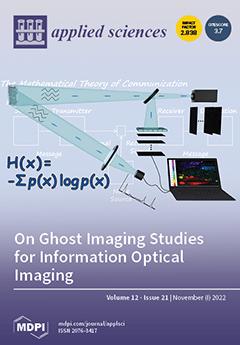Carbon quantum dots (CDs) are a fascinating class of carbon nanomaterials (less than 10 nm in size) with unique optical, electrical, and physicochemical properties. In addition to these properties, CQDs exhibit the desired advantages of aqueous stability, low toxicity, high surface area, economic
[...] Read more.
Carbon quantum dots (CDs) are a fascinating class of carbon nanomaterials (less than 10 nm in size) with unique optical, electrical, and physicochemical properties. In addition to these properties, CQDs exhibit the desired advantages of aqueous stability, low toxicity, high surface area, economic feasibility, chemical inertness, and highly tunable photoluminescence behaviour. Recently, graphitic carbon nitride (g-C
3N
4) has appeared as one of the required stable carbon-based polymers due to its varied applications in several fields. In this regard, modification strategies have been made in the g-C
3N
4 semiconductor using CQDs to enhance the adsorptive and photocatalytic activity. In comparison to other semiconductor quantum dots, g-C
3N
4 shows strong fluorescent properties, such as wide excitation spectra, photostability, and tunable photo-luminescent emission spectra. The interaction inside this multicomponent photocatalyst further promotes the photocatalytic activity by improving charge transference, which plays a vital role in electrochemistry. Therefore, CQDs are auspicious nanomaterials in the field of photocatalysis, wastewater treatment and water adsorption treatment. This particular article featured the recent progression in the field of CDs/g-C
3N
4-based photocatalysts focusing on their luminescent mechanism and potential applications in wastewater treatment.
Full article





